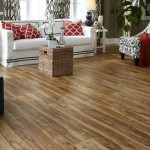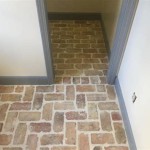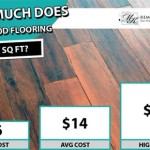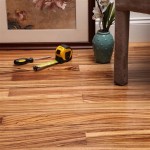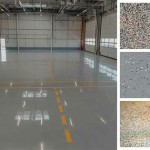What to Put Under Vinyl Flooring on Concrete: A Comprehensive Guide
Installing vinyl flooring on concrete is a popular choice for homeowners due to its durability, affordability, and ease of maintenance. However, for the flooring to perform optimally and last its intended lifespan, proper preparation of the subfloor is crucial. Understanding what to put under vinyl flooring on concrete is essential to ensure a successful installation.
1. Moisture Barrier
Concrete is prone to moisture transmission, which can damage vinyl flooring. A moisture barrier acts as a barrier, preventing moisture from rising through the concrete and damaging the flooring. There are two common types of moisture barriers:
- Polyethylene Film: A thin sheet of polyethylene film, typically 6 mils thick, is placed over the concrete to create a moisture barrier.
- Self-Adhesive Membrane: A self-adhesive membrane is applied direttamente to the concrete, providing a more permanent moisture barrier.
2. Underlayment
An underlayment provides a layer of cushioning between the concrete and the vinyl flooring. It serves several purposes:
- Reduces Sound: Underlayment absorbs sound, reducing noise transmission from foot traffic and impact.
- Provides Comfort: A foam or felt underlayment provides a softer surface to walk on, enhancing comfort.
- Smooths Imperfections: Concrete floors may have minor imperfections or unevenness. An underlayment helps smooth these out, providing a stable base for the vinyl flooring.
3. Leveling Compound
In some cases, the concrete floor may have significant unevenness or slopes. A leveling compound is used to create a level surface and ensure proper installation. The compound is poured over the concrete, self-levels, and dries to a smooth, even finish.
4. Sound Matting
For additional soundproofing, a sound matting can be installed under the underlayment. Sound matting is typically made of recycled rubber or cork and is highly effective in reducing impact noise and vibrations.
5. Cement Backer Board
In areas where heavy loads or moisture are present, a cement backer board can be installed over the concrete. Cement backer board provides additional support and helps prevent the concrete from cracking or shifting. It is commonly used in bathrooms, kitchens, and commercial applications.
Installation Considerations
- Overlapping: When installing moisture barriers or underlayment, overlap the edges by at least 4 inches to prevent gaps.
- Seaming: If the moisture barrier or underlayment is not wide enough to cover the entire floor, seam the edges using a waterproof tape.
- Drying Time: Allow sufficient time for the leveling compound to dry before installing the vinyl flooring.
Conclusion
Understanding what to put under vinyl flooring on concrete is crucial for a successful and long-lasting installation. By incorporating a moisture barrier, underlayment, and, if necessary, a leveling compound or sound matting, you can ensure that your vinyl flooring performs optimally, resists moisture damage, and provides comfort and noise reduction for years to come.

How To Prepare A Concrete Floor For Vinyl Flooring Parrys

Tips For Installing Vinyl Plank Over Concrete Floors Lemon Thistle

What Type Of Underlay For Vinyl Flooring On Concrete

Installing Luxury Vinyl Flooring On Concrete What You Need To Know 50floor

Concrete Subfloor Preparation For The Vinyl Floor Installation How To Diy Mryoucandoityourself

Installing Luxury Vinyl Flooring On Concrete What You Need To Know 50floor

Do I Need An Underlayment For Vinyl Flooring Lx Hausys

4 Ways To Prevent Moisture Damage Under Luxury Vinyl Flooring Floor Trends Installation

Lvp Flooring Installation How To Install Luxury Vinyl Plank In A Basement Diy

Laminate Flooring On Concrete Basement Floors Expert Installation Guide Csg Renovation
See Also


